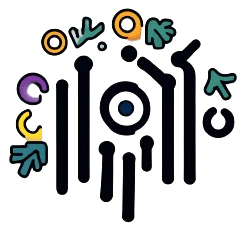A Comparative Study of Spatial Narratives: Multitemporal Event Representation in Miniature Art vs. Sequential Chronology in Conventional Urban Design
| Parameter | Miniature Art – Multitemporal Event Representation | Conventional Urban Design – Sequential Chronology |
|---|---|---|
| Narrative Framework | Utilizes non-linear, multi-layered spatial storytelling where multiple events or periods coexist within a single composition. Embraces simultaneity and holistic temporal perspectives. | Adopts linear and progressive narratives that follow a structured chronology, depicting a sequence of events in a spatial manner reflective of the temporal flow in real-world scenarios. |
| Temporal Perception | Represents time as a malleable construct, where historical, present, and speculative future events intersect. Encourages contemplation on the cyclical and interconnected nature of time. | Time is perceived as a unidirectional continuum. Past, present, and future are distinctly separated, promoting a more reductionist approach to temporal representation. |
| Spatial Composition | Spatial elements are compressed and scaled to reflect multiple realities, using abstraction and symbolism to depict both micro and macro contexts simultaneously. | Spatial elements are designed to reflect real-world proportions, focusing on practical layout and navigation. Symbols are used minimally and lack deeper temporal connotations. |
| Cultural and Contextual Integration | Integrates cultural symbolism and metaphors that transcend time, conveying a deeper understanding of societal evolution and transformation. | Cultural aspects are integrated within the contemporary and historical context, with limited exploration of future speculations or hypothetical scenarios. |
| Use of Scale and Proportion | Non-conventional use of scale to juxtapose historical narratives with present-day contexts, creating a unique spatial-temporal dialogue. | Adheres to real-world scales, making a clear distinction between different chronological phases without integrating varying temporal layers in a single spatial representation. |
| Material and Medium | Utilizes diverse materials such as miniature sculptures, dioramas, and layered paintings to create depth and illustrate the interplay of different time periods. | Primarily utilizes architecture, urban layouts, and spatial zoning as mediums. The material representation remains uniform across different temporal sequences. |
| Psychological Impact on Audience | Evokes curiosity and stimulates cognitive flexibility by challenging the viewer to deconstruct and reconstruct time through spatial metaphors. | Provides a predictable narrative flow that aligns with conventional understanding of time, leading to lower cognitive disruption and reinforcement of linear temporal interpretation. |
| Philosophical Interpretation | Philosophically aligned with non-Western, cyclic notions of time (e.g., Hindu or Buddhist perceptions of time as cyclic and recursive), promoting a spatial dialogue across time layers. | Follows Western philosophical views of time as linear and progressive, adhering to the idea of chronological improvement and historical linearity. |
| Applications in Urban Theoretical Frameworks | Influences experimental urbanism and sustainable city design through the conceptual blending of historical precedents, contemporary practices, and future speculations in a single spatial construct. | Forms the basis for traditional urban planning theories, such as zoning, urban sprawl, and concentric growth models, focusing on sequential development and linear expansion. |
| Relevance to Modern Urban Design | Serves as an inspiration for incorporating multitemporal design principles in smart cities, resilient infrastructures, and heritage preservation by recognizing the coexistence of past, present, and future narratives. | Remains fundamental to structured urban planning and development policies, emphasizing structured growth, functionality, and predictability without delving into multitemporal integration. |
| Innovative Potential for Future Spatial Narratives | Presents an opportunity to revolutionize urban design by fostering environments that accommodate multiple temporal realities, encouraging adaptive reuse and sustainable development practices. | Offers incremental innovations within the linear framework but lacks a conceptual basis for integrating non-linear, multitemporal narratives within urban spatial constructs. |
The comparative study highlights the innovative potential of multitemporal narratives in miniature art to reshape conventional urban design approaches by integrating cyclic and interconnected temporal perspectives.
